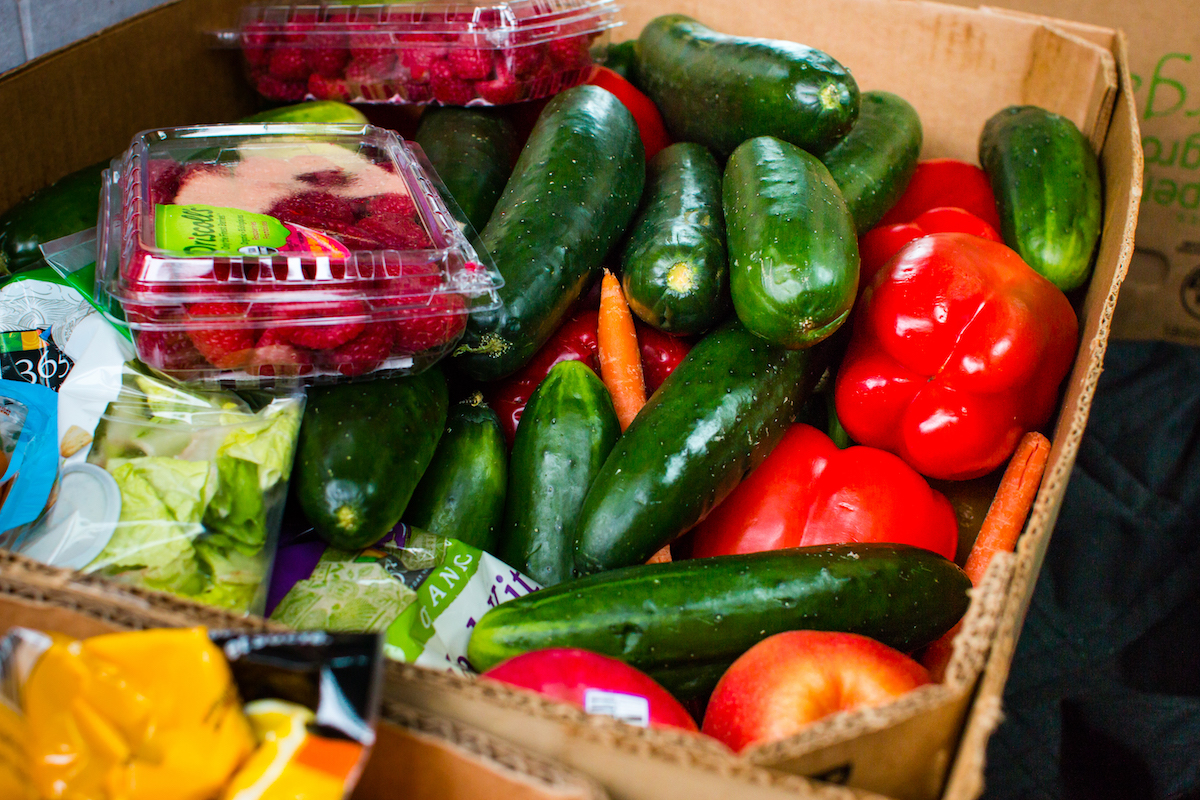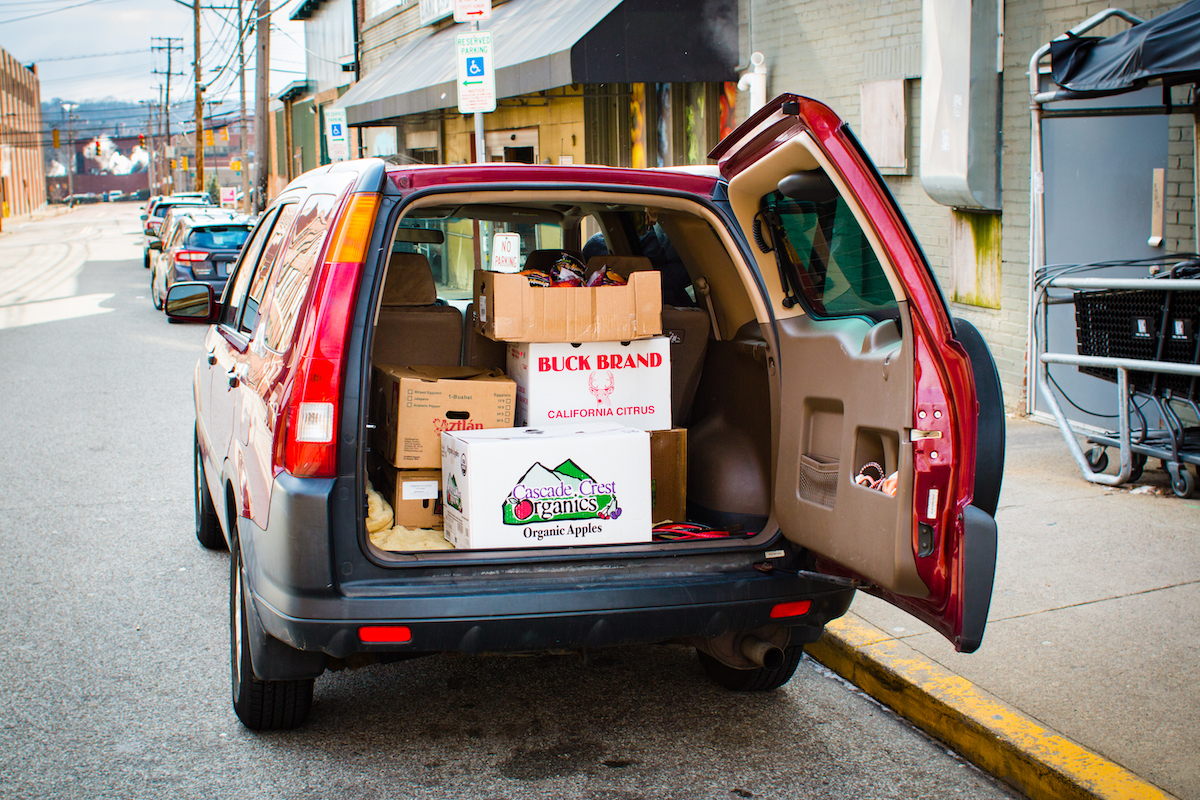Want to Address Food Insecurity in Your Community? There's an App For That.

Serg64/Shutterstock.com
How a county housing authority partnered with a tech nonprofit to deliver food to vulnerable residents.
Every month, food delivery trucks pull up outside Allegheny County Housing Authority housing units and wait for volunteers to open the doors and begin unloading boxes of goods.
It’s mostly produce—cucumbers, green peppers, apples, heads of cauliflower and broccoli. Some have minuscule bruises, others are in good condition but slightly past their sell-by (not expiration) dates. It’s all edible, and all distributed for free to residents of the housing authority—every piece of it diverted from landfills, courtesy of Pittsburgh-based nonprofit 412 Food Rescue.
“There are a lot of issues with the way we distribute food, and we need to understand how to actually make sure that people can access the food we’re making available,” said Leah Lizarondo, the group’s co-founder and CEO. “Partnering with housing authorities and other sites such as daycares allows us to bring food right to where people already are. That has been such a game-changer in terms of how we address food insecurity.”
Lizarondo launched 412 Food Rescue in 2013 after being stunned by a National Resources Defense Council report that found that nearly half of the food produced in America ends up in the trash. The nonprofit’s main tool is the Food Rescue Hero app, which connects volunteer drivers with grocery stores and restaurants wanting to donate excess food. About 15 percent of donations are bread and pastry products, but more than half of it is fresh produce—all perfectly edible but failing to conform, for one reason or another, to various aesthetic standards.

“It’s the apple with a little bit of bruising, or the eggplant with what grocers call ‘rusting’—those brown marks,” Lizarondo said. “We all know how beautiful supermarket shelves are. The imperfect produce just gets left behind. Every day, there’s about two cases of those from a regular-sized grocery. And it’s all perfectly good—it’s just not perfect.”
Using the app, donor organizations ping the nonprofit whenever they have a cache of food ready for pickup. Officials there match the donation with an organization that can use it—time-sensitive produce might go to a soup kitchen, for example—and then dispatches a volunteer driver to deliver it (Lizarondo compares it to Uber or Lyft, but to transport food instead of human passengers). From start to finish, most transactions take about two hours.
The nonprofit works with hundreds of community organizations, including both the Pittsburgh and Allegheny County Housing Authorities. The county partnership began in 2015, after Bev Moore, the agency’s deputy director, approached Lizarondo at a networking event after hearing her speak about the app. The agency had previously partnered with a private food bank to operate distribution centers at several of its sites, but those were discontinued, leaving many residents without a way to obtain staple food items for their families. Lizarondo’s concept presented a unique solution, Moore thought.
“I told her, ‘The way you described what it is you want to do—you need what we have, and I’m making that available. We’re ready when you are,’” Moore said. “That’s what got us started.”
The partnership began with several pilot sites, which “went over beautifully,” Moore said. Since then, the app has “rescued” and delivered more than a million pounds of food to the housing authority. At least 4,800 residents there receive food from the app each year, many of them using the ingredients to feed their families. A third-party survey of participants showed a 90 percent improvement on food insecurity, with 88 percent of recipients saying they use almost all of the food they’re given.
“Has it really made a difference with food insecurity?” Moore said. “Absolutely.”

Housing authorities represent a unique opportunity to deliver food directly to people in need, rather than going through a third-party intermediary like a food bank where impoverished residents still must find time to pick up goods and get there and back, Lizarondo said. The nonprofit partners with housing authorities in both Pittsburgh and Allegheny County, and has since expanded to Cleveland, Philadelphia and San Francisco.
“We try to partner with housing authorities in every city we’re present in, and the driver for that really is the results that we have shown in Pittsburgh,” Lizarondo said. “Since we started working with them, emergency calls for food within the housing authority within our city have pretty much ended. People are now having food every single week in most of the sites and we are building up to cover all of their sites.”
There are bonus benefits as well. Moore has seen residents strike up conversations and friendships during food pickups as they bond over unfamiliar ingredients. Once, a young mother expressed confusion over how to prepare cauliflower for her family.
“An older lady there taught them a recipe and then took it to another level and said, ‘I’m going to cook one, and I want you to come over so you can see what it tastes like.’ That stayed with me because it was such a teachable moment,” Moore said. “The stories that have come from being exposed to this kind of produce are incredible. They are now seeing the value of eating and preparing a healthy meal for themselves.”


